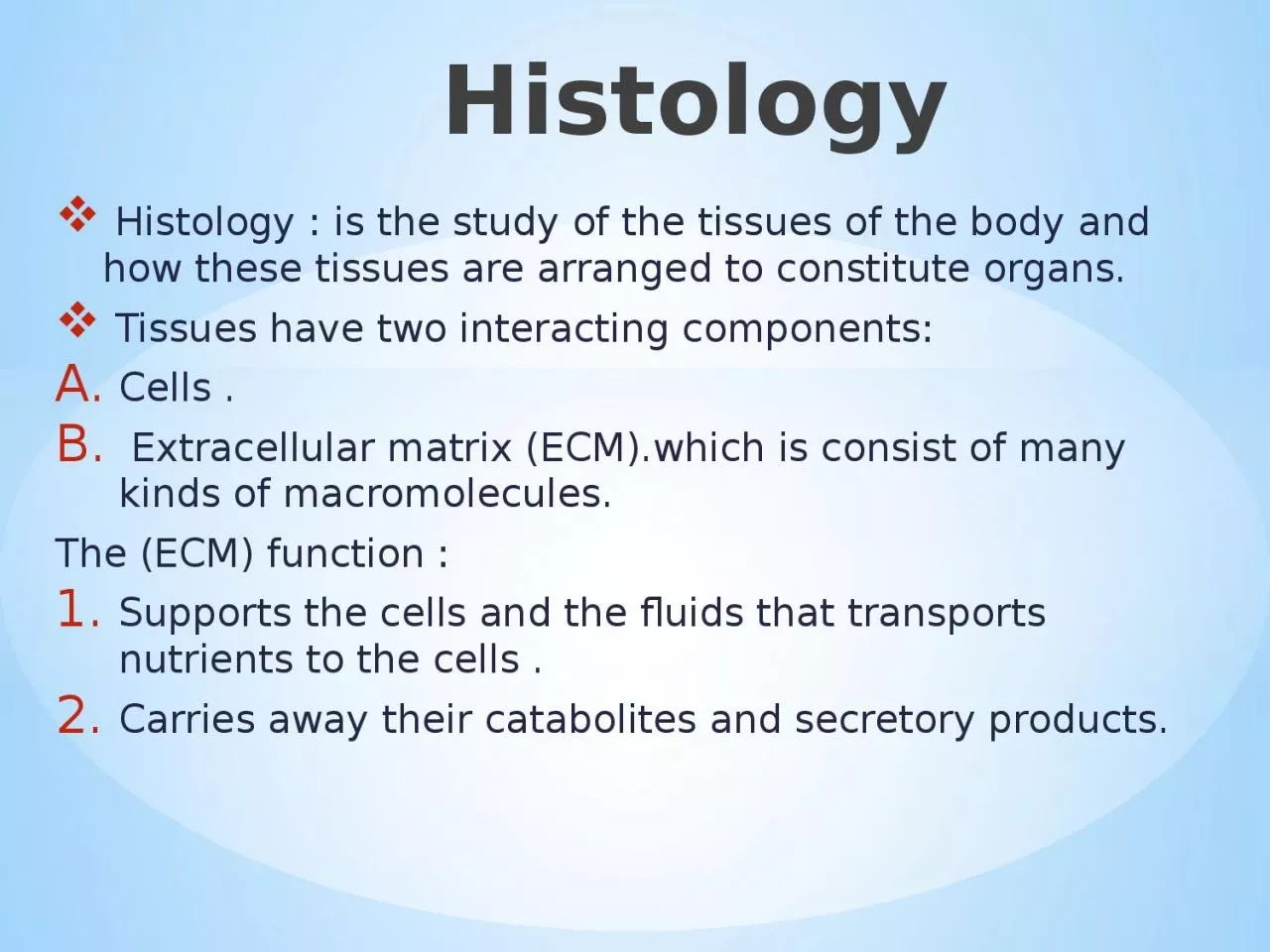

Tissues have two interacting components Cells Extracellular matrix ECMwhich is consist of many kinds of macromolecules The ECM function Supports the cells and the fluids that transports nutrients to the cells ID: 1009301
Download Presentation The PPT/PDF document "Histology : is the study of the tissues ..." is the property of its rightful owner. Permission is granted to download and print the materials on this web site for personal, non-commercial use only, and to display it on your personal computer provided you do not modify the materials and that you retain all copyright notices contained in the materials. By downloading content from our website, you accept the terms of this agreement.
1. Histology : is the study of the tissues of the body and how these tissues are arranged to constitute organs. Tissues have two interacting components:Cells . Extracellular matrix (ECM).which is consist of many kinds of macromolecules.The (ECM) function :Supports the cells and the fluids that transports nutrients to the cells .Carries away their catabolites and secretory products. Histology
2. Types of Tissue Despite its complexity, the human body is composed of only four basic types of tissue:Epithelial tissue.Connective tissue.Muscular tissue.Nervous tissue. 1. Epithelial tissue it is a tissue in which cells are bound tightly together structurally and functionally to form a sheetlike or tubular structure with little extracellular material between the cells
3. All epithelial cells in contact with connective tissue at basal surfaces which referred as the Basement membrane which is a thin extacellular layer of specialized proteins , its components:Attach epithelia to connective tissue.Regulate (filter) substances passing from connective tissue to epithelia.Guide tissue during regeneration after injury.
4. Functions of epithelial tissueCovering.Lining.Protecting surfaces.Absorption. Ex. Intestinal liningSecretion. Ex. Parenchymal cells of glandsSpecific cells of certain epithelia may be contractile or specialized sensory cells. Ex1. Taste buds Ex2. Olfactory epithelium Because epithelial cells line all external and internal surfaces of the body, all substances that enter or leave tissues and organs must cross an epithelium.Ex. Epidermis